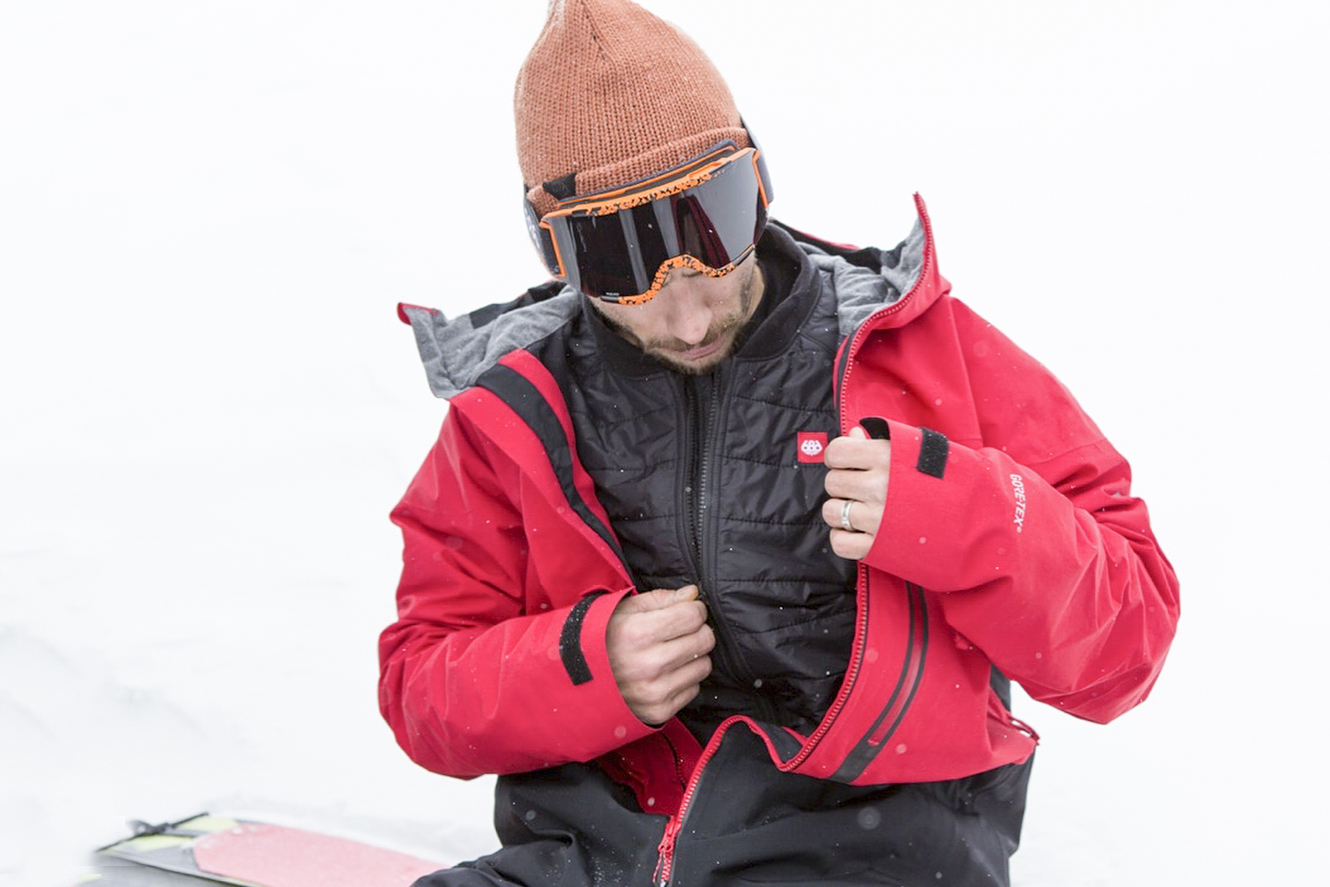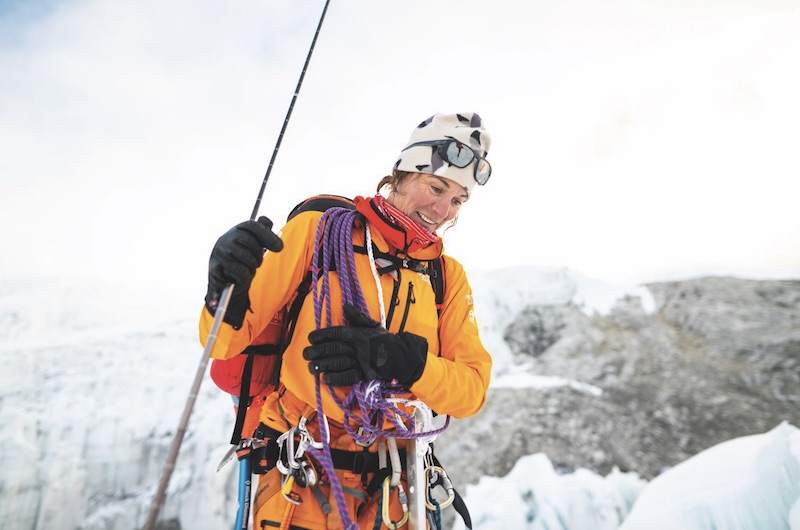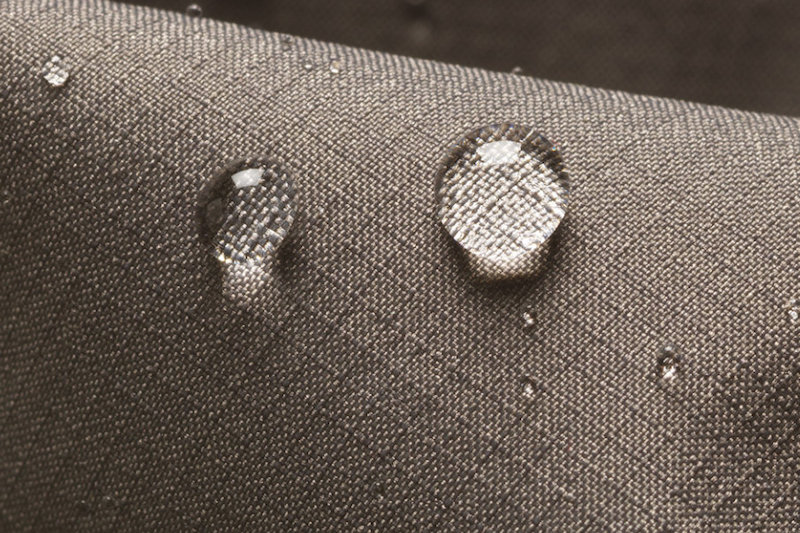
Innovation has always played a crucial role in the outdoor industry, with major brands constantly looking for new ways to improve the performance of their gear. Companies like The North Face, Arc’teryx, and Columbia continually push the envelope in an effort to make their products lighter, warmer, and more durable. Sometimes they do that by incorporating proprietary materials that they have researched and developed in house, other times they rely on a variety of components created by other companies that can offer them a competitive edge as well. Some of those materials come from brands that are iconic in their own right, creating fabrics, insulators, and other items for use in the latest and greatest outdoor equipment.
Many of these materials are boldly listed on a new the box or tags that come with new gear, but many consumers have no idea what they are used for or why they should care. We’ve sorted through some of the most commonly used components to give you a rundown of what they bring to the table and to help you better understand why outdoor brands often make a big deal out of the fact that they incorporate these items into their products.
Gore-Tex
First created by W.L. Gore and Associates back in 1969, Gore-Tex was a major revolution for the outdoor industry. The material is a waterproof fabric that also incorporates a breathable membrane, simultaneously keeping excess moisture out while allowing heat and perspiration to escape. This allowed gear manufacturers to finally create products that were comfortable to wear, even in a serious downpour. Prior to the introduction of Gore-Tex, rain gear often kept water out but caused the wearer to overheat, with sweat being trapped inside.
Over the years, Gore-Tex has evolved dramatically. Performance has continued to improve and the materials have been refined to be used in a wide variety of products, including jackets, boots, gloves, hats, and more. There are even multiple forms of the fabric designed for different purposes, including thicker versions built for extreme conditions or light materials used during highly aerobic activities. Some versions of Gore provide extra protection from the wind, while others are made to offer additional warmth. In the end though, no matter which type of Gore-Tex your gear uses, its meant to keep you comfortable and dry out on the trail.
PrimaLoft

First developed for the U.S. military back in 1983, PrimaLoft is a micro-fiber synthetic insulation made from polyester-based performance yarns. The material is used in a wide variety of products, including jackets, gloves, sleeping bags, footwear, and numerous other items. Over the years, PrimaLoft has proven itself to be a viable alternative to down, which offers an excellent warmth-to-weight ratio, but doesn’t always perform well in wet conditions. Additionally, once it becomes wet, down can take a very long time to dry, whereas PrimaLoft will shed moisture much more quickly. Because of this, gear manufacturers have incorporated the synthetic insulation into their products in order to deliver a high level of performance without compromising comfort in inclement weather.
Much like Gore-Tex, PrimaLoft has continued to evolve over the years and now offers a variety of different versions designed for different products. For instance, PrimaLoft Gold has been designed for use in high-performance outerwear and sleeping bags, where warmth, breathability and packability are an issue. Meanwhile, PrimaLoft Silver is built for clothing that is worn closer to the skin, such as base layers or activewear, offering up a similar level of performance, but with additional comfort.
PrimaLoft Bio
PrimaLoft Bio is a completely new type of synthetic insulation scheduled to begin appearing in outdoor gear in late 2020. Designed to be easy on the environment, this new material is not only made from 100 percent recycled fibers, it is also engineered to be completely biodegradable as well. That means that when a garment that uses PrimaLoft Bio is discarded, it will begin to break down and disappear from a landfill at an extremely accelerated rate. Just how fast? The company says that it the material is nearly completely gone in roughly a year’s time, leaving behind just organic components such as water, methane, carbon dioxide, and biomass. That’s far faster, and more eco-friendly, than most other synthetic insulations, which often takes years – if not decades – to fully degrade. Best of all, PrimaLoft says that it’s new Bio insulator performs at an extremely high level and is very durable throughout the life of a product, with the breakdown only occurring after the garment has been outlived its usefulness.
Polartec

Synthetic fleece would be the best way to describe Polartec, a material that can trace its origins back to the 1970s. Made from polyester, the fabric is used in jackets, hats, sweaters, and other items meant to keep us warm in cold temperatures. Originally designed to mimic actual wool, Polartec offers many of the same qualities of its natural cousin, but in a thinner, lighter-weight version. It is highly water resistant, maintains its ability to insulate even when wet, and dries quickly, which can be crucial in the outdoors. It also offers a good warmth-to-weight ratio, is flame resistant, and hypoallergenic too.
As with most of the other products on this list, Polartec has continued to evolve and expand over the years. Today, there are multiple variations of the material designed for different purposes. For instance, the Power Stretch version is meant for use in clothing that requires unrestricted movement without compromising performance, while Polartec Alpha – originally created for the U.S. Special Forces – delivers the company’s highest level of warmth, breathability, and packability.
Polartec Power Air

The latest innovation from Polartech comes in the form of Power Air, which is reportedly the first fabric designed to reduce fiber shedding. What does that mean exactly? In the simplest terms, it means vastly improved durability. The company says that a garment made from Power Air sheds its fleece fibers at a rate that is five times less than competing materials, which translates to a tougher garment that can continue to perform at a high level over a longer period of time.
Power Air is meant to be used in mid-layers, such as a fleece jacket or hoodie. Traditionally, those types of products have achieved their warmth and comfort by incorporating luted or high-pile knit structures that help to keep warmth close to the body. The downside is that those materials can shed fibers quickly, causing them to fray and lose performance. Power Air eliminates that shedding by encapsulating the insulating fibers directly into the knitting process. The result is a piece of gear that is more sustainable and eco-friendly because it is built to last far longer than similar garments.
FutureLight

The North Face’s proprietary next-generation fabric is called FutureLight and it promises to be a game changer for outdoor pursuits. North Face says that it isn’t just the most waterproof and breathable fabric the company has ever created, it is also the most environmentally friendly too. Made almost entirely from recycled materials, a 100 percent recyclable itself, FutureLight requires less energy and water to create as well.
But what really makes FutureLight stand out is its ability to keep moisture at bay while allowing heat and perspiration to escape. This results in the total elimination of condensation, keeping climbers, trail runners, and hikers drier and more comfortable. The fabric is so good that it will even be used in North Face tents, where the build up of condensation can often be problematic. FutureLight’s extreme breathability promises to make those concerns a thing of the past however, setting a new standard for outdoor apparel and equipment.
Cordura

Originally developed by DuPont back in the 1920s, Cordura is a line of fabrics that are best known for their high level of durability. Made mostly out of nylon or nylon blends, the material was used in military applications during World War II, but started to see wide-spread consumer adoption in the 1970s when researchers discovered a way to apply colored dye to the manufacturing process. From there, the fabrics were incorporated into numerous products, including backpacks, apparel, and footwear thanks to its ability to shrug off cuts, tears, scuffs, and abrasions.
Today, Cordura comes in a variety of different weights designed to meet the needs of many outdoor brands. The fabrics are used in the construction of everything from base layers and socks to outwear built to survive in the harshest environments imaginable. Durability remains the trademark quality however, ensuring consumers get garments that are built to last.
Aerogel

Developed by NASA to help keep astronauts warm in the extreme environments of space, aerogel is known as the thinnest, lightest, and warmest insulator in the world. The material is technically a gel in a solid state, which gives it almost no weight, density, or thermo conductivity. Historically speaking, it aerogel has been quite fragile and expensive to work with, although a number of outdoor brands are now finding ways around that. As a result, material is now becoming more common in outdoor gear, improving overall warmth in jackets, gloves, hats, boots, and other equipment. Aerogel lacks the ability to breathe however, which often requires it to be used strategically to prevent overheating.
PrimaLoft has developed its own form of the insulation, appropriately calling it PrimaLoft Aerogel. This has played a large role in making the material much more available to gear manufacturers across the outdoor industry, although other companies – such as Oros – have developed their own version of aerogel too. In practice, these different versions of aerogel function similarly to one another, providing unprecedented warmth while actually reducing bulk. This is likely to make aerogel more popular in the future, although costs remain somewhat higher than other types of insulation.
Thinsulate

In 1979, 3M introduced a new synthetic insulation material called Thinsulate, which derived its name from the ability to provide warmth while remaining relatively thin. Thinsulate fibers are just 15 micrometers in diameter, which is substantially smaller than polyester, the material that is traditionally used as an insulating agent in outdoor clothing. Over the years, Thinsulate has found its way into boots and jackets, but is especially popular in glove and hats. The synthetic fibers are regarded as a high-performance alternative to down, in part because they are water resistant while remaining breathable too. Later iterations of Thinsulate included a flame-resistant version, a more waterproof alternative, and one that more closely mimics the properties of down.
eVent

Another waterproof and breathable fabric, eVent is designed to keep us comfortable and dry during our outdoor pursuits. Where this material differs from others is that the fabrics actually contain millions of tiny pores that allow our performance apparel to vent out heat and perspiration even when they’re not wet. Dubbed “Direct Venting,” this process helps to prevent moisture from building up in the first place, rather than just trying to wick it away once we’ve already become hot and sweaty. This has made eVent a popular alternative for use in rain gear, shell jackets, footwear, and a variety of other products.
eVent’s DVexpedition line of fabrics are made for those pushing the envelope in the mountains, where protection from the elements is crucial. The company also offers DValpine for backpackers and hikers, and DVstorm for outdoor athletes as well. It has even developed a product called DVwind for exceptional performance in gusty conditions and DVstretch for weather protection for active cyclists and runners.
Pertex

Built to be lightweight and durable, what sets Pertex fabrics apart from the competition is the high level of breathability and wind resistance that they bring to the table. Pertex was originally released in 1979 and has since grown to become one of the most popular and frequently used manufacturing materials in the outdoor industry, with many brands incorporating the fabric primarily into jackets and sleeping bags. To achieve its high level of performance, Pertex incorporates two different yarns into its design, with an inner yarn that uses larger filaments working in conjunction with an outer yarn with smaller filaments. Moisture will naturally move from the inner yarn to the outer thanks to a capillary motion driven by a warmer body temperature versus the outside air. The result is surprisingly good wicking capabilities that don’t compromise protection from the elements in any way.
Today, Pertex comes in three varieties: Shield, Quantum, and Equilibrium, each with its own characteristics, features, and performance.
DownTek Hydrophobic Down
Down has been a staple in outdoor gear since Eddie Bauer (the man, not the company) invented the first down jacket way back in 1940. But as already mentioned, down is a great insulator as long as it doesn’t get wet. If that happens, the feathers loose their loft, can become frozen together, and essentially become useless. DownTek changes all that by adding a special coating to down feathers, greatly enhancing their ability to resist moisture. In fact, DownTek claims that its down is able to stay dry 35 times longer than standard down, without adding significant cost.
Since its introduction back in 2012, DownTek has been used in dozens of products, most notably jackets and sleeping bags. Since then, the company has continued to refine the material further, improving performance while also making it more environmentally friendly by removing perfluorocarbons from the manufacturing process. The water-repellant down has gotten so good in fact, that there is virtually no reason to purchase gear that doesn’t use it these days.
Dyneema

Billed as the strongest fiber in the world, Dyneema is a wonder fabric that is currently revolutionizing the outdoor industry. The material is used in everything from backpacks and tents to jackets and boots, and for good reason. Dyneema is incredibly thin and light, and yet is reportedly 15 times stronger than steel, while also remaining completely waterproof. On top of that, despite its ethereal appearance, the fabric is incredibly durable too, making it an ideal option for a wide variety of applications in the outdoor space. The only downside to Dyneema at the moment is that it remains expensive to manufacture and use in large quantities, thus equipment that incorporates the material tends to run on the pricier side. But as production continues to ramp up in the years ahead, prices are expected to come down.
Just how light is Dyneema? At the 2018 Summer Outdoor Retailer Show in Denver, Colorado, gear manufacturer Big Agnes unveiled a new tent made almost entirely of the fabric. The two-person backpacking shelter weighs in at a svelte 1 pound, 2 ounces, making it one of the lightest tents on the market.
Spectra

Developed by Honeywell, Spectra Fiber is a lightweight fabric that is incredibly tough and durable. Ten times stronger than steel, the material is commonly used in tactical gear designed for use by law enforcement and military, although it is starting to find its way into more outdoor products too. Spectra Grid 100 and Spectra Micro Grid are the versions specifically designed for use in the outdoor space, with these fabrics made from Spectra finding their way into clothing, gloves, backpacks, cycling apparel, base layers and more. Expect to see this material show up in more products moving forward.
Proprietary Fabrics and Materials
While most to the items on this list are available for all outdoor gear manufacturers to use in their products some companies prefer to develop their own proprietary materials instead. For instance, OutDry is Columbia’s own waterproof, breathable fabric, while Outdoor Research calls its version AscentShell instead. Similarly, Sierra Designs uses a homegrown hydrophobic down insulation known as DriDown and The North Face uses Thermoball as a synthetic alternative. There are literally dozens of these types of fabrics in use throughout the industry, most of which are variants of other materials. Still, it important to recognize that while Mountain Hardwear’s Dri.Q EVAP technology isn’t Gore-Tex for instance, it still offers similar performance and features. In the end, that’s truly what matters, as you’ll know that your outdoor gear is built to perform at an extremely high level, even under the worst of conditions.


